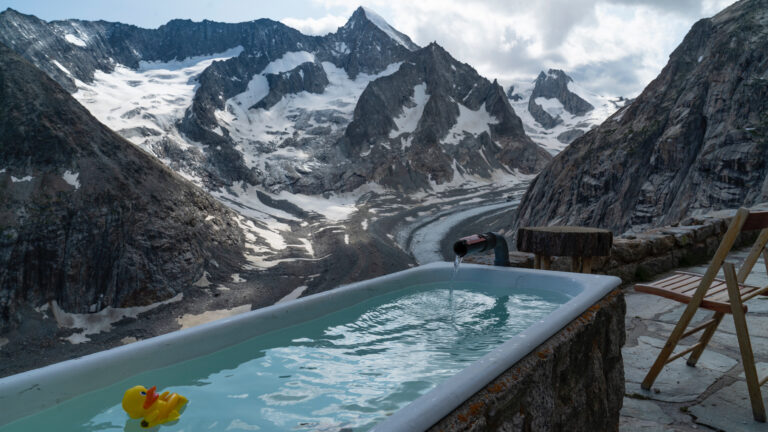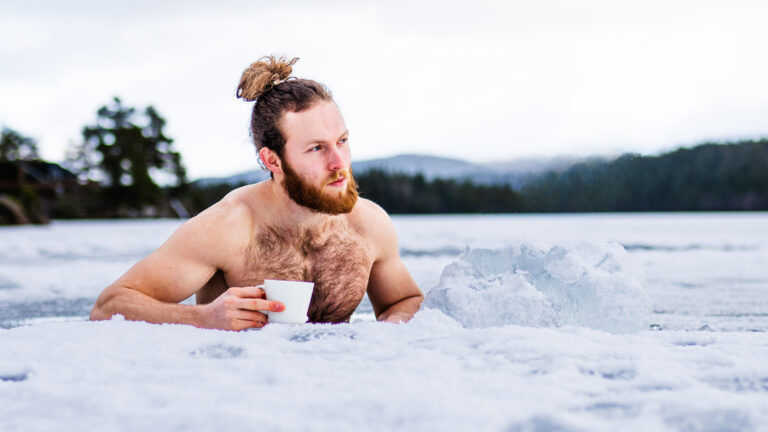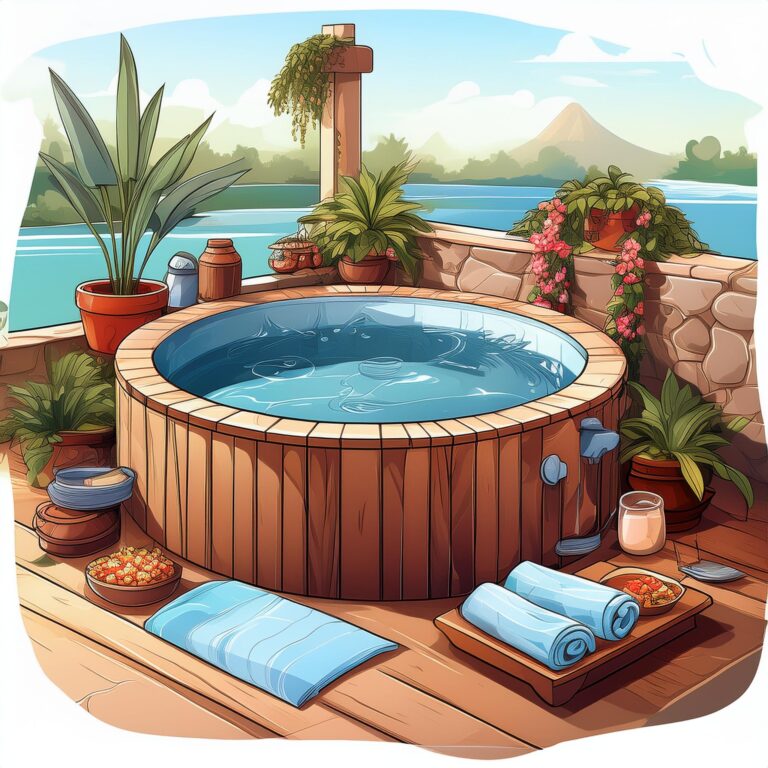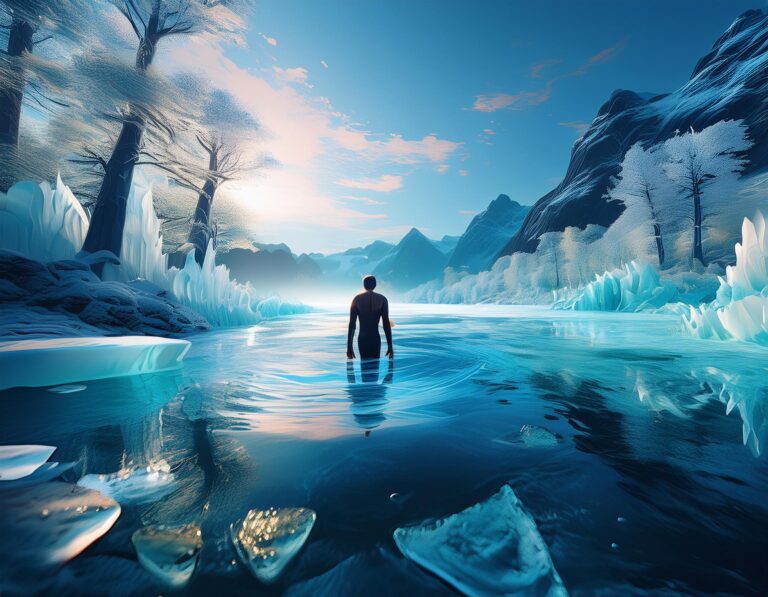What’s the best temperature for cold water therapy?

Editor’s note
Forever a fan of the details, I know how important it is for anyone serious about their craft to “dial in” and set themselves up properly. It’s all about the calibration!
Building a solid foundation, with the proper set and setting, is the first step toward success.
If you’re just starting your cold water therapy journey, you might be wondering what the ideal water temperature is to get the most out of each plunge. Wonder no more, because Kristina has done all of the research for you! Enjoy!
Matthew
Cold water therapy, also known as cold immersion or cold plunging, is a popular wellness technique. It has many proven benefits, like muscle recovery, mental clarity, and reduced inflammation.
To maximize these health benefits, it’s important to know what is the ideal temperature range for effective cold water therapy. Keep reading this article to find out!
What is Cold Water Therapy?
Cold water therapy is an umbrella term for many wellness practices. Some of them include:
- ice baths,
- cold showers,
- water immersion in cold lakes, rivers, or other bodies of water,
- whole body cryotherapy.
These cold water wellness practices are very popular among many, especially wellness enthusiasts and athletes. However, you don’t have to play a sport to enjoy it! If you want a thrilling and relaxing experience, you can take part in cold water therapy any time, at home, in nature, or at a wellness facility. It has many benefits, like improving muscle recovery, reducing inflammation, and improving stress, immunity, sleep quality, and quality of life (1, 2).
If you want to know more about the proven health benefits of cold water immersion, read up on our other articles:
However, make sure you have all the necessary details before you immerse yourself in the cold. One of the most important things to take care of is the temperature you will be immersing yourself into. The name of this practice already tells us that the temperature will feel cold, and probably shocking. But how low is too low? And what is the optimal temperature range for cold water therapy? Keep reading to find out.
Why is Temperature Important?
The temperature of the water is very important because it can significantly affect the physiological response of your body. You don’t want the water to be too warm, because that won’t produce any desired effects. On the other hand, water that’s too cold can be unsafe and lead to hypothermia or cold shock.

Optimal Temperature for Cold Water Therapy
The ideal temperature for cold water therapy generally falls within the range of 10-15°C (50-59°F). This temperature range will produce a beneficial physiological response, such as less muscle soreness and inflammation, but will remain relatively safe for most individuals.
Depending on your level of experience with cold water therapy, you might be able to handle lower temperatures or settle for slightly higher ones in the beginning. These are the general guidelines you can follow:
- Beginner Level: Start with water around 15°C (59°F), and limit immersion to 1-2 minutes.
- Intermediate Level: Use temperatures between 10-14°C (50-57°F), with immersion times up to 10-15 minutes.
- Advanced Level: Some individuals, after becoming accustomed to cold exposure, may choose temperatures below 10°C (50°F) for shorter durations.
Are you a beginner or a more advanced cold-therapy enthusiast? Let us know in the comments!
One type of cold therapy is whole-body cryotherapy, which falls slightly different from “usual” temperatures. This kind of cold therapy involves immersing your entire body in the extreme cold, dry air for 2-4 minutes, at temperatures as low as -100°C (-148°F) (3).
If you want to know more about the science of cold water therapy, check out this video by The Wall Street Journal. Daniela Hernandez, their health and science reporter, explains all that’s known and unknown about cold water therapy at this time:
Safety Tips
Cold water therapy is proven to be safe, but there are some additional health tips you should have in mind before starting. For example, if you suffer from Raynaud’s disease or cardiovascular issues, contact your doctor before starting cold exposure therapy (4).
Here are some additional tips:
- While immersing in the cold, keep your breathing steady and try not to hyperventilate before entering.
- Always warm up gradually after a cold plunge, put on dry clothes, and try to keep moving.
- Never do a cold plunge alone, especially in natural or very cold water.
Conclusion
Cold water therapy is amazing, in any form you choose to perform it in. When you get used to it, you will learn how much it can help you with muscle pain, relaxing, and inflammation. However, it shouldn’t be too extreme. The optimal temperature range for most people is 10°C to 15°C (50°F to 59°F). If you’re new to cold water therapy, start higher and shorter, then gradually adapt.
Literature sources:
- Cain T, Brinsley J, Bennett H, Nelson M, Maher C, Singh B. Effects of cold-water immersion on health and wellbeing: A systematic review and meta-analysis. PLoS One. 2025 Jan 29;20(1):e0317615. doi: 10.1371/journal.pone.0317615.
- Xiao F, Kabachkova AV, Jiao L, Zhao H, Kapilevich LV. Effects of cold water immersion after exercise on fatigue recovery and exercise performance–meta analysis. Front Physiol. 2023 Jan 20;14:1006512. doi: 10.3389/fphys.2023.1006512.
- Costello JT, Baker PR, Minett GM, Bieuzen F, Stewart IB, Bleakley C. Whole-body cryotherapy (extreme cold air exposure) for preventing and treating muscle soreness after exercise in adults. Cochrane Database Syst Rev. 2015 Sep 18;2015(9):CD010789. doi: 10.1002/14651858.CD010789.pub2.
- Ito C, Takahashi I, Kasuya M, Oe K, Uchino M, Nosaka H, Sakamoto S, Yoshida R, Kasuya S, Fujimori D, Nakamura S, Yamada E, Kanda J. Safety and efficacy of cold-water immersion in the treatment of older patients with heat stroke: a case series. Acute Med Surg. 2021 Feb 19;8(1):e635. doi: 10.1002/ams2.635. Erratum in: Acute Med Surg. 2021 Apr 08;8(1):e643. doi: 10.1002/ams2.643.






